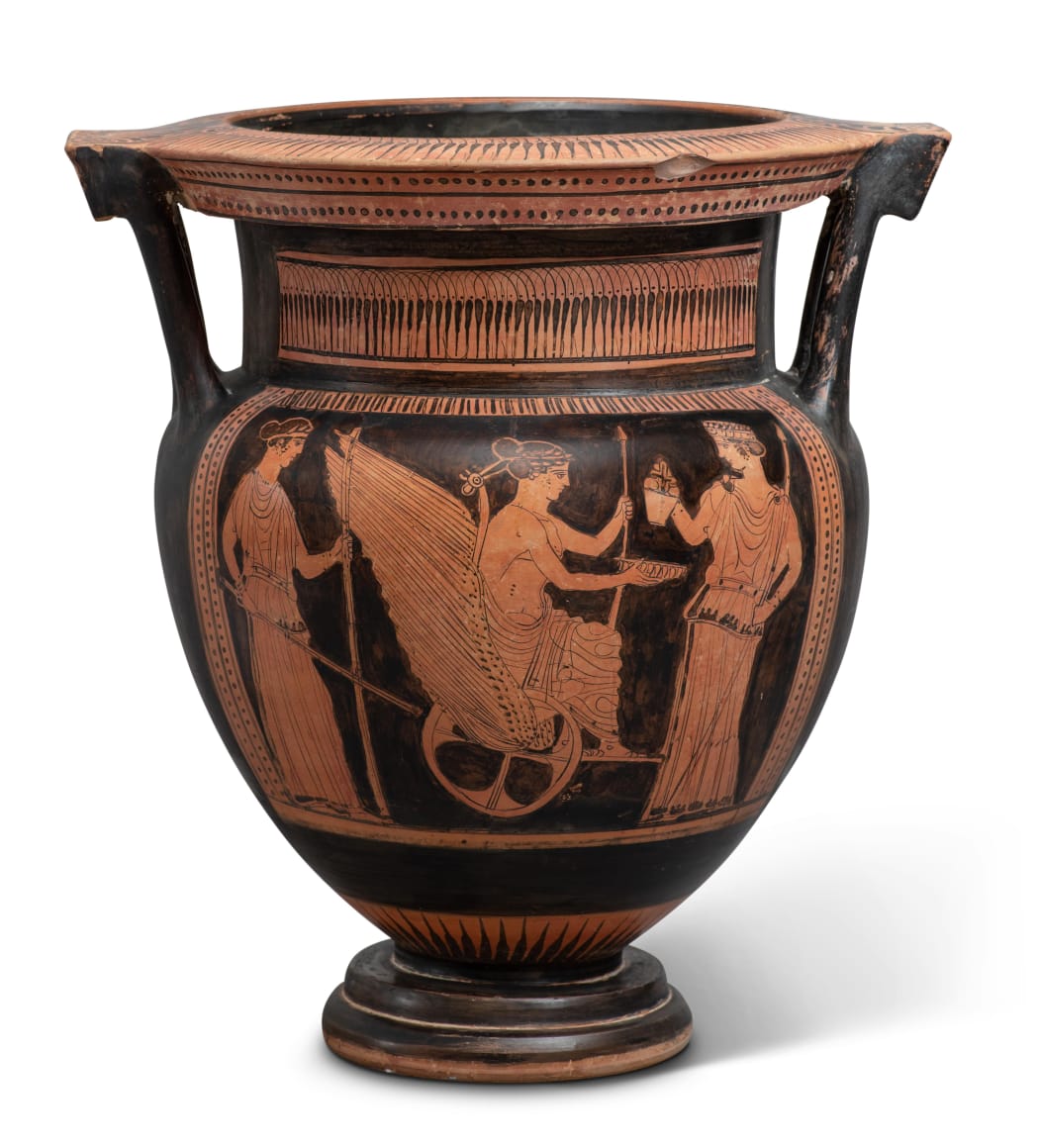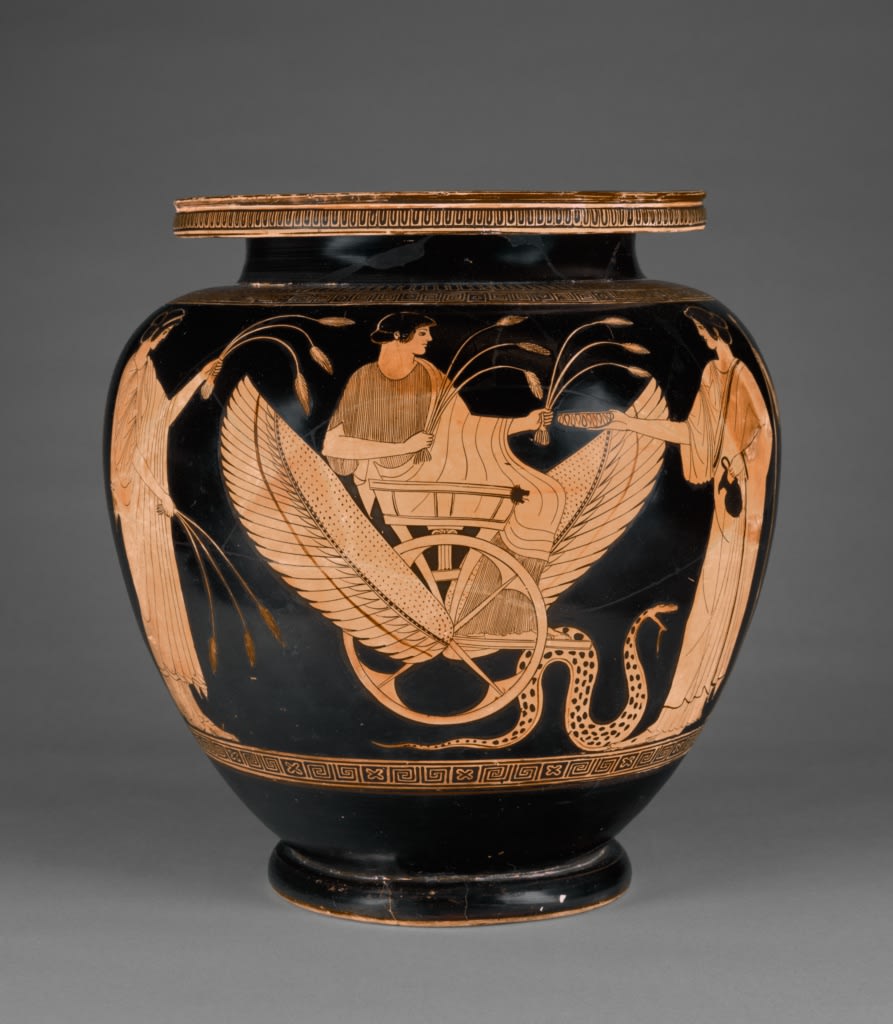Bounteous Demeter yoked her Serpent-Pair to her chariot, and fixed the curbing bits and made her way between the earth and sky to Tritonia's city, and brought the chariot to Triptolemus, and gave him seed and bade him scatter it. Ovid, Metamorphoses 5. 64

Mythology in ancient Greece was at the heart of everyday life. Myths were used to explain everything from the weather to religious rituals, and they gave a sense of meaning to the world the Greeks saw around them. During the 6th and 5th centuries BC the Greeks believed that nature was a gift from the gods, for example olives from Athena, grapes from Dionysus and grain from Demeter. Divine introduction was the explanation for almost all aspects of civilisation, including the science of agriculture.
It was for this purpose that the myth of the demi-god Triptolemus was created. Triptolemus first appears in literature in the Homeric Hymn to Demeter, which begins with the distraught Demeter searching for her daughter Persephone, who has been taken by Hades. In the guise of an old woman named Doso, Demeter travelled to Eleusis where she was warmly welcomed by King Celeus and his wife Metanira. The king asked the goddess to nurse his two sons, Demophon and Triptolemus. Triptolemus was sickly and Demeter decided to feed him her breast milk, which not only cured him but also instantly turned him into an adult. In order to thank her hosts Demeter taught Triptolemus the art of agriculture and sent him all over Greece to teach mankind how to grow grain. The vital importance of agriculture in an agrarian society such as Ancient Greece makes this a fascinating window into how such a culture seeks to explain the origins of its source of sustenance.

AN ATTIC RED-FIGURE KRATER,
ATTRIBUTED TO THE DUOMO PAINTER
Classical Period, circa 440 - 430 BC
The scene depicted on the obverse of the Kallos Attic red-figure krater attributed to the Duomo Painter, shows the moment just before Triptolemus departs on his Mission in a winged chariot. The Mission of Triptolemus is best known from representations on Athenian vases, from their inception in the mid 6th century BC to their finale in around 425 BC.
The earliest representations of the myth are on black-figure vases. Early Archaic examples depict Triptolemus in his chariot in between draped men and women. We can notice here that in contrast to the red-figure example there are no wings on his chariot. This seems to have been a later addition, probably in order to explain his method of transport more clearly. In these first representations his chair appears to levitate, adding to the magical quality of this myth.

An Attic black-figure amphora, circa 550-525 BC
Rhode Island School of Design Museum, New York, inv.no 25.083
As the myth evolved, more elaborate additions were made. In the red-figure versions, not only were the wings added, but snakes were also often shown on his flying chariot. However the most important addition is the presence of Demeter and Persephone who are shown either side of his chariot pouring libations or holding torches. Several of the Mission scenes also include multi-figured compositions including other Eleusinian heroes and deities. The best-known example of this composition is an Attic red-figure skyphos attributed to the painter Makron, currently in the British Museum, inv.no 1873,0820.375.

An Attic red-figure footed Dinos, attributed to the Syleus Painter
Circa 470 BC
The J.Paul Getty Museum, Los Angeles, inv.no 89.AE.73
Triptolemus is mentioned in Greek literature almost exclusively in connection with his mission set by the goddess Demeter and the depictions of this tale that we find on Attic vases have become incredibly important for our understanding of this myth. The popularity of this subject on Greek vases indicates the prevalence of the story of the Mission in Greek traditional thought.